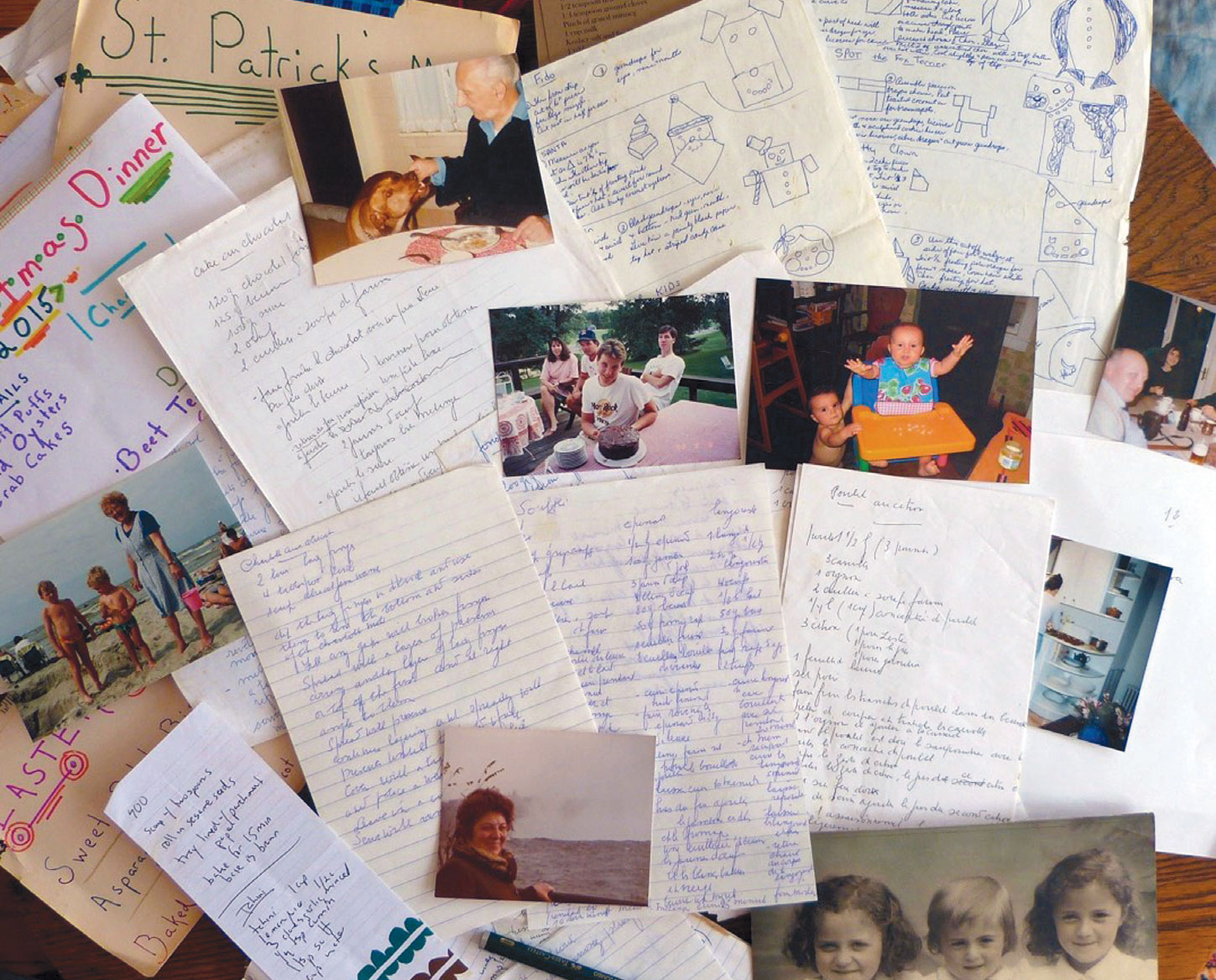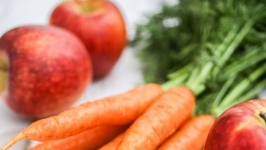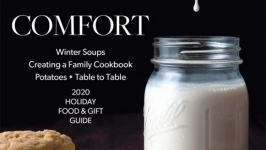How to Make a Family Cookbook
I have spent most of my holidays since childhood in New Jersey, either in the house I grew up in South Orange or where I live now in Peapack-Gladstone, but there was one time my parents and I traveled to Belgium to spend Christmas with my mother’s family, which remains one of my most magical holiday memories.
To be honest, I was probably no more than 5 at the time, but the images from that trip remain imprinted on my mind like old vacation slides that flicker but never fade: a Christmas tree lit with slim white candles, walking home in someone’s arms through the dark streets of Brussels after midnight mass, and the most memorable of all, the feasts prepared by my Belgian grandmother.
Caroline Carpentier Allebé (or Mamy, as she was called by everyone) remains to this day the best home cook I have ever known and she continues to inspire me as a cook and a recipe writer. Some of the many delicacies that she would prepare for the Christmas Eve and Christmas meals were fresh shucked oysters with shallot-specked mignonette sauce and lobsters purchased at the outdoor fish market, a big bird stuffed with fruits and chestnuts, and a buche de Noel made with chocolate and fresh mocha cream and decorated with marzipan mushrooms.
Even though, sadly, I can no longer have these dishes made by her hands, I can still make them for my own family because she wrote all of her recipes down in her beautiful script. For years I have shuffled through her yellowing handwritten pages when looking for a particular dish, but I was always a bit worried that they might get torn or smeared in an unfortunate melted butter incident. I also had no way of sharing them with relatives or, eventually, my own children, so I decided to collect them along with other cherished recipes in a family cookbook that I can easily share.
So even though this holiday season offers a strange mix of emotions for myself—and, I’m sure, for many of you—why not consider making something that will bring you all together however far apart you may be?
Here’s a guide to creating a permanent collection of your family’s most beloved and coveted recipes to share and cook from for years to come.
1. RECIPES
Once you put out the request to collect recipes from your relatives, perhaps wrangling away particular family favorites, you will want to make sure you’re getting information that can actually be used and followed. It’s important to remember that even the most adept home cooks are not professional recipe writers, and their idea of measuring ingredients may be to add a handful or pinch of this or that, or to just taste until it seems right.
If they’ve made their famed Swedish meatballs or onion dip a thousand times, chances are they do it by memory and don’t even think about the steps to follow. So ideally you want to be right alongside them while they prepare the dish so you can record everything they do and be able to ask follow-up questions (“do you always use that much cinnamon?” “can I mix that in a blender instead?” “can I use lemon juice instead of vinegar?”).
If you’re unable to be together in person, consider observing via an app like FaceTime to make sure you’re catching all of the details, even your wily uncle’s quick addition of a super-secret ingredient to his famed chili.
2. PERSONAL ANECDOTES AND FAMILY LORE
While you’re gathering recipes, make sure to also interview the person about any background information to add in the recipe’s introduction. Whether it’s the origin of the dish, how they prefer to serve it, or any personal anecdote, these background details can help frame each recipe in a personal way. This is also a good place to add any family lore about a dish, from a triumphant flaming baked Alaska to a fallen soufflé; include these stories so they can be told again and again.
3. NON-RECIPE RECIPES
Even non-recipe recipes deserve to be included, especially if it’s something special that you’ll want future generations to know about. For example, every summer when my extended family gathers down the shore, my Aunt Gail makes her famed “L.B.I. sandwiches” for lunch at the beach. The recipe? Wonder Bread, mayo, thick slices of Jersey beefsteak tomatoes generously seasoned with salt and pepper, and a slice of American cheese. The recipe is more about the technique (which layers go first) and the setting: cousins everywhere, flip-flops thrown in the sand, tomato juices running down your forearm, and the hot Jersey shore sun.
So whether it’s your brother-in-law’s method for a very dry martini or how your grandpa made all of his grandchildren the perfect hot dogs on toasted buns withextra mustard whenever they came to visit, don’t forget to include those sentimental non-recipe recipes as well.
4. PHOTOS AND ARCHIVAL VISUALS
Don’t forget to include photos of the finished dish. We all know that we eat with our eyes as well as our stomachs, and now most smart phones have cameras that let even nonprofessionals take magazine-worthy pictures. Just remember these two very important words: natural light. Everything looks better when it’s shot in warm, indirect light versus directly under an indoor fluorescent kitchen light.
A little bit of styling helps, too; think about using simple white dishes to let the food pop, or a pretty linen or family heirloom place setting to give a sense of history and place. The art direction could be a good project to delegate to the younger, more image-savvy influencer members of the family, who are adept at taking beautiful photos of everything from their Shake Shack burger to their bubble tea. It’s also a clever way to include them in the collaboration.
In addition to photos of the finished recipes, consider including archival elements as well: artwork, photos of the person who contributed the recipe and their kitchen, or even the original recipe written in their handwriting.
5. PACKAGING YOUR COLLECTION
Once you’ve gathered all of your recipes, anecdotes, and photos, then you need to think about how you want to package your collection. If you Google “family cookbook” you will find a multitude of apps and computer software that will format and bind your recipes into a book so that it’s easy to make a smooth final product and create copies to give as gifts. Some of these, like Blurb, offer more professional design services, but there are also companies like Heritage Cookbook that provide more creative assistance. Popular photo book companies like Pinhole and Shutterfly also now offer cookbook-making formats where you can choose styles, fonts, and covers. If you’re the crafty sort and only intend to make a few copies, then consider purchasing a beautiful binder from a craft store or site like Rag & Bone Bindery [ragandbonebindery.com] and making your book more homespun. If you have a professional cookbook that you love, look at its style and format for inspiration as well.
6. START NOW
Do not delay! Food connects us in many ways but it’s also a living timeline that runs continually from the past to the present, carried from some distant relative’s kitchen perhaps in a country or home far away. Once lost or forgotten, a beloved family recipe may never be found again unless it’s archived. So if your mother’s gingerbread or kugel or babka recipe is something you want to have always, then do not wait to write it down.













